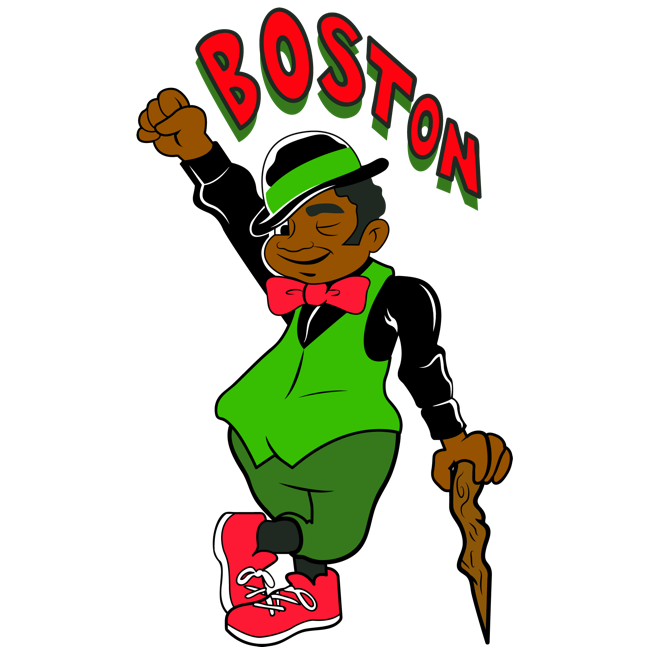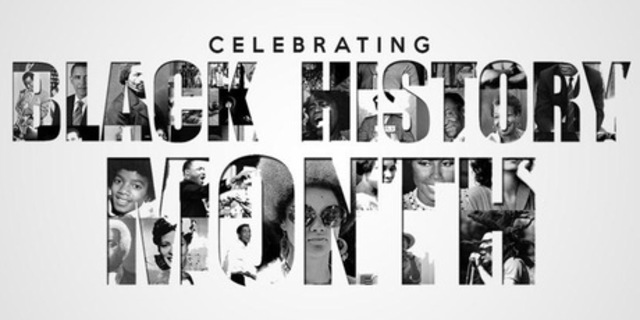ALL 30 NBA LOGOS REIMAGINED
B/R and noted artist Hebru Brantley celebrate Black History Month by recreating all 30 NBA logos
BY JOON LEE
ARTWORK BY HEBRU BRANTLEY
FEBRUARY 16, 2017
Hebru Brantley has been a presence on the Chicago art scene for years, but 2016 presented a huge national stage for the artist. Brantley teamed up with Chance the Rapper for the artwork in the “Angels” music video, depicting the hip-hop star flying through the air as a character similar to Brantley’s Flyboy, often found in his Chicago murals.
Now, Brantley is teaming up with B/R to redesign logos for every NBA team in honor of Black History Month. Brantley, who was born in the Chicago neighborhood Bronzeville, looked to the history of every NBA city to find inspiration for each re-imagination.
“Everything that happens historically doesn’t necessarily translate within one small design,” Brantley says. “History is long and long-winded sometimes, so it’s hard to pick apart a moment and make it clear from an aesthetics standpoint, but I looked at pivotal moments and certain individuals that can be represented with these teams and logos and become sort of the rebranded version of this team.”
Beyond the cities’ obvious historical references, Brantley turned again toward history for aesthetic inspiration, looking at old Negro Leagues logos in addition to refashioned logos over the years, stretching from high school to the pros.
“In the past, the days before Photoshop and Illustrator, when things had to be done by hand, there’s this aloofness but this tightness and proficiency in creating these different logos and sort of looking at it in terms of spacing and sizing,” Brantley says. “For me, it’s a different sort of language to speak aesthetically because I’m not a logo-based designer or artist in that way. Still wanting to capture the feeling of what these teams are about and say as much I can from a historical context within this very small design.”

ATLANTA
The Atlanta Hawks logo pays tribute to two important Atlanta institutions: the Sweet Auburn neighborhood and Ray Charles. Sweet Auburn, once described by John Wesley Dobbs as the “richest Negro street in the world,” plays home for the Hawks, who now don Charles’ signature glasses.

BOSTON
This revision of the Celtics logo depicts a black Lucky the Leprechaun with a power fist. The Liberator, a Boston anti-slavery newspaper founded in 1831 by abolitionists William Lloyd Garrison and Isaac Knapp, served as the inspiration for Frederick Douglass’ own publication, The North Star.

BROOKLYN
Despite being a Knicks fan, Spike Lee set his most famous movie, Do The Right Thing, in the Bed-Stuy neighborhood of Brooklyn and depicts the racial tensions of the time. Released in 1989, it was named one of the 10 best films of the decade by legendary critic Roger Ebert.

CHARLOTTE
The Hornets logo spotlights the most well-known sit-in of the Civil Rights era, which led to the desegregation of Woolworth’s, a popular department store. The protest started with four students from North Carolina A&T University and eventually spread to other stores in the South.

CHICAGO
The Defender name is in reference to the Chicago Defender, started in 1905 by Robert S. Abbott and called the “most important” paper in black press by Brent Staples of the New York Times. The daily version of the paper ran from 1956 to 2003.

CLEVELAND
Cleveland was the home of Garrett A. Morgan, an inventor and entrepreneur born in Kentucky who moved to Cincinnati at age 14 in search of work before settling in the home of the Cavaliers. Morgan is credited as the inventor of the modern traffic light and the respiratory protective hood, used to shield firefighters from inhaling dangerous fumes.

DALLAS
The Mavericks take on the “Crafts” moniker in reference to Juanita Craft, the first black woman in Dallas County to vote in a public election. Craft was a Texas field organizer for the NAACP, working to integrate the University of Texas Law School before and during her time on the Dallas City Council.

DENVER
After the Civil War, up to one-third of cowboys in the west were black, stretching from Colorado to Wyoming, Nebraska and Missouri all the way into Texas. Black cowboys were often former slaves who became peace officers of native reservations, owned land or joined the rodeo.

DETROIT
This Pistons logo pays homage to producer and rapper J Dilla’s second solo album, Donuts, released three days before his 2006 death. Dilla rose to fame and received critical acclaim in the underground Detroit hip hop scene before cementing his place in music history as one of the most influential artists of all time.

GOLDEN STATE
The Bay Area was the birthplace of the Black Panther Party for Self Defense, formed in 1966 by Huey Newton and Bobby Seale. It initially served to monitor police before eventually developing community health clinics, a news service and free breakfast programs for children.

HOUSTON
Matt Garner, a legendary pitmaster in Texas, made smoked links the signature of Texas steakhouses everywhere. Garner, by many accounts, is credited with the creation of Houston’s barbecue style.

INDIANA
Gary, Indiana, was home to the Jackson 5, one of the first Motown acts to gain notoriety and prove to be a crossover hit. While Jermaine, Marlon, Jackie and Tito were talented in their own right, the real star was Michael, who became perhaps the biggest pop star of all time. He died in 2009.

LOS ANGELES (CLIPPERS)
After a white police officer arrested Marquette Frye on suspicion of driving under the influence in 1965, rumors spread that the police beat up Frye and kicked a pregnant woman. This incited the Watts Riots, a six-day, $44 million rebellion, the second-most expensive in modern American history.

LOS ANGELES (LAKERS)
The Lakers logo is reimagined to pay tribute to NWA and their seminal debut album Straight Outta Compton. NWA, most notably featuring legends Ice Cube, Dr. Dre and Eazy-E, popularized gangsta rap, created significant controversy and sold over 10 million units in the United States.

MEMPHIS
A unique style of the blues highlighted by syncopated rhythm reminiscent of early jazz was developed in Memphis, home of blues legend B.B. King. Born Riley B. King, he earned the nickname “Beale Street Blues Boy,” soon shortened to “Blues Boy” and eventually to “B.B.,” while appearing on radio programs in Memphis.

MIAMI
The Heat logo pays tribute to Sidney Poitier, who was born in Miami and was the first African-American to win the Academy Award for best actor. Poitier received the Honorary Academy Award in 2001 for his contribution to American cinema and the Presidential Medal of Freedom from former President Barack Obama in 2009.

MILWAUKEE
In Milwaukee, the Bronzeville neighborhood served as the economic, social and cultural hub of the African-American community between 1900 and 1960. The neighborhood was demolished to make room for a freeway but has been revitalized as a cultural and entertainment district.

MINNESOTA
Prince’s status as an American icon was only further confirmed following his passing last year. Born in Minneapolis in 1958, Prince was dubbed “truly Minnesota’s favorite son,” paying respects to the legend’s accomplishments as one of the most influential artists of all time.

NEW ORLEANS
New Orleans, also known as Dixieland, is the home of traditional jazz, which was created in the early 20th century. New Orleans was also home to the New Orleans Tribune, the first black daily newspaper in the country.

NEW YORK
In 1923, the Harlem Renaissance Casino served as home to the New York Renaissance, an all-black basketball team that took its name from its home court. The Rens won the first World Professional Basketball Tournament in 1939, sporting yellow and blue uniforms.

OKLAHOMA CITY
Greenwood, a neighborhood in Tulsa, was home to one of the wealthiest concentrations of African-American businesses during the early 20th century and was popularly known as “Negro Wall Street” at the time until the Tulsa race riot of 1921. The white mob attacked residents and destroyed more than 35 blocks in a devastating act of racial violence, one of the worst in the country’s history.

ORLANDO
Acclaimed writer Zora Neale Hurston’s family moved to Eatonville, Florida, when she was young. Hurston eventually became a major figure in the Harlem Renaissance with her short stories and playwriting. She published her most famous novel, Their Eyes Were Watching God, in 1937.

PHILADELPHIA
Philadelphia’s logo references the Million Woman March, held in 1997 on the Benjamin Franklin Parkway in Philadelphia. The grassroots effort became a template to follow due to its founding by Phile Chionesu, an activist and an owner of an African crafts shop unassociated with any national black organizations, and Asia Coney, a public housing activist.

PHOENIX
On Feb. 9, 1953, an Arizona court ruled that segregation at Phoenix Union high schools was illegal, leading to students and faculty attending an integrated high school in the fall of 1953. One year later, the Supreme Court ruled against public school segregation in Brown v. Board of Education.

PORTLAND
The rise of black athletes in Oregon served as a counter against racism. Charles Williams and Robert Robinson became the state’s first black collegiate athletes in any sport during the same period the governor and Portland’s mayor honored the KKK’s Grand Dragon at a “Patriotic Dinner” in the 1920s.

SACRAMENTO
On May 2, 1967, the Black Panthers occupied the state capitol of California in response to a bill that would’ve effectively ended their armed patrol of the police. Legislators still passed the bill, but the event launched the Black Panther Party into the national spotlight.

SAN ANTONIO
The Admiral name is a tribute to David Robinson, the former Spurs center who embodies the spirit of San Antonio more than any other NBA player in the city’s history and served as a civil engineering officer in the Navy following his graduation from Annapolis. San Antonio was once home to five military installations.

TORONTO
The Owls nickname pays respect to the Underground Railroad. Canada often represented the final destination for many people in America looking to escape slavery. An estimated 30,000 slaves made their way to Canada, many eventually settling in Toronto.

UTAH
Twenty-five years before Mormons arrived in Utah, black people worked as fur trappers and explorers. There were 50 black people in the state by 1850, and 59 by 1860. Black pioneers were both slaves and free, Mormon and non-Mormon.

WASHINGTON
The redone Wizards logo recognizes D.C.’s important place in African-American history as the site of the March on Washington in 1963 and the Million Man March in 1995, two of the largest demonstrations for black equality in the city’s history.













